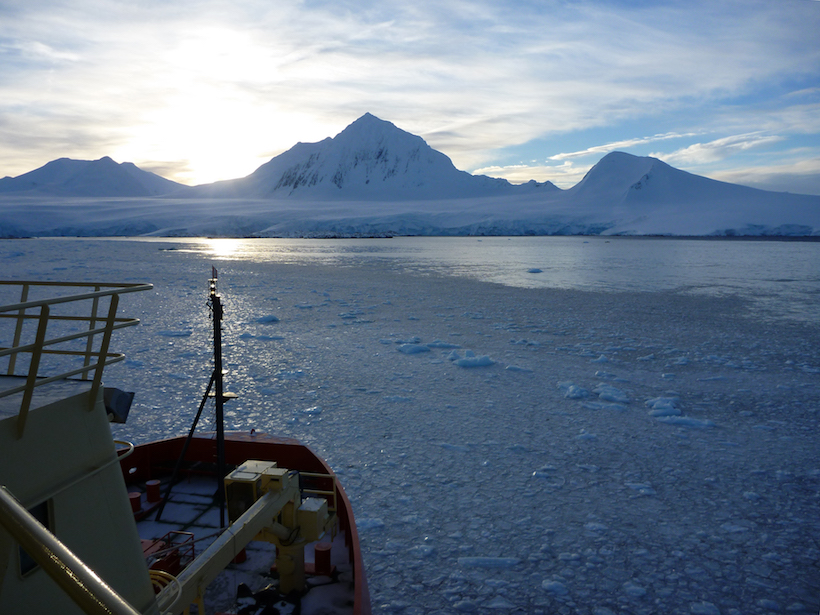Source: Global Biogeochemical Cycles
Iron is in our blood, our buildings, and our biomes. In our oceans, iron has helped regulate global climate by sustaining carbon-catching phytoplankton. However, current environmental models have difficulty pinning down the relationship between climate and marine iron cycling because they have little data to go on.
In new research, Black et al. conducted an extensive observational study as part of the international GEOTRACES program to investigate iron residence times in the top 250 meters of the ocean and to close gaps in previous results.
Iron in the ocean comes in various forms, depending on its bonding with other materials. Particulate iron may coat dust grains suspended in the water column, for example, and is largely inaccessible to marine life because it typically sinks out of the upper ocean before it dissolves and becomes available for organisms. Dissolved molecular iron, meanwhile, is more bioaccessible. Because these and other forms of iron behave differently in marine environments, their residence times will differ.
Whereas previous studies have estimated residence times ranging from days to years, the new research narrows the window, finding that in most cases, the residence time for total iron is between 10 and 100 days. Subantarctic regions are an exception. As there is very little iron in these areas, residence times depend on local events like infusions of iron from atmospheric dust or from eddies and vary from just a day up to decades.
The researchers also found that dissolved iron has inconsistent residence times that vary in month- to yearlong cycles depending on local conditions. Organisms may respond to seasonal or other changes in their environment to take up more or less dissolved iron.
All told, the residence times of iron indicated in the new study are shorter than what previous studies have estimated. The researchers suggest that the new data and results should help to develop improved biogeochemical models that better predict carbon sequestration in the ocean. (Global Biogeochemical Cycles, https://doi.org/10.1029/2020GB006592, 2020)
—Elizabeth Thompson, Science Writer
Citation:
Thompson, E. (2020), How long does iron linger in the ocean’s upper layers?, Eos, 101, https://doi.org/10.1029/2020EO150740. Published on 26 October 2020.
Text © 2020. AGU. CC BY-NC-ND 3.0
Except where otherwise noted, images are subject to copyright. Any reuse without express permission from the copyright owner is prohibited.
Text © 2020. AGU. CC BY-NC-ND 3.0
Except where otherwise noted, images are subject to copyright. Any reuse without express permission from the copyright owner is prohibited.

